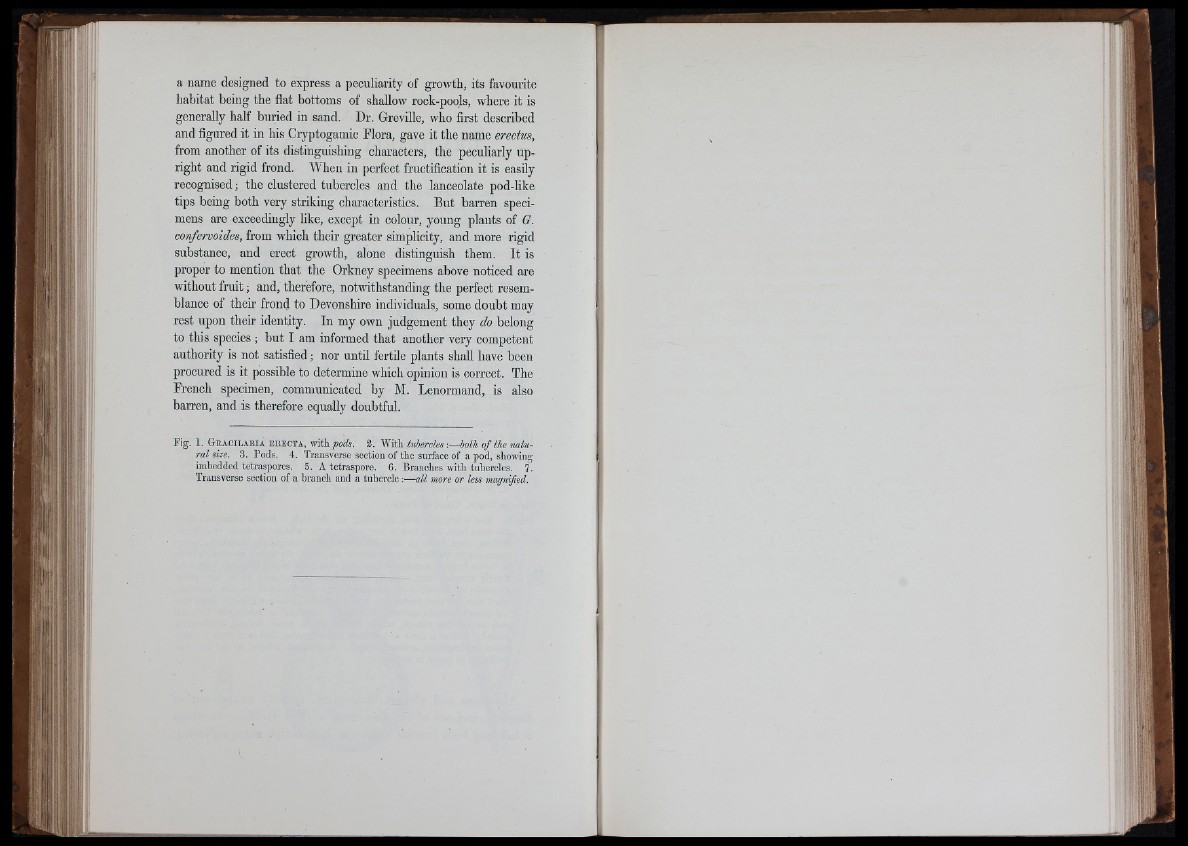
a name designed to express a peculiarity of growth, its favourite
liabitat being the flat bottoms of shallow rock-poqls, where it is
generally half buried in sand. Dr. Greville, who first described
and figured it in his Cryptogamic Flora, gave it the name erectus,
from another of its distinguishing characters, the peculiarly upright
and rigid frond. When in perfect fructification it is easily
recognised ; the clustered tubercles and the lanceolate pod-like
tips being both very striking characteristics. But barren specimens
are exceedingly like, except in colour, young plants of G.
confervoides, from which their greater simplicity, and more rigid
substance, and erect growth, alone distinguish them. It is
proper to mention that the Orkney specimens above noticed are
without fruit ; and, therefore, notwithstanding the perfect resemblance
of their frond to Devonshire individuals, some doubt may
rest upon their identity. In my own judgement they do belong
to this species ; but I am informed that another very competent
authority is not satisfied ; nor until fertile plants shall have been
procured is it possible to determine which opinion is correct. The
French specimen, communicated by M. Fenormand, is also
barren, and is therefore equally doubtful.
Fig. 1. G r a o ila r ia e r e c t a , with pods. 2. With tubercles-.— both o f the natural
size. 3. Pods. 4. Transverse section of the surface of a pod, showing
imbedded tetraspores. 5. A tetraspore. 6. Branches with tubercles, 7.
Transverse section of a branch and a tubercle ;— all more or less magnified.
f.-r
III!
t ti I